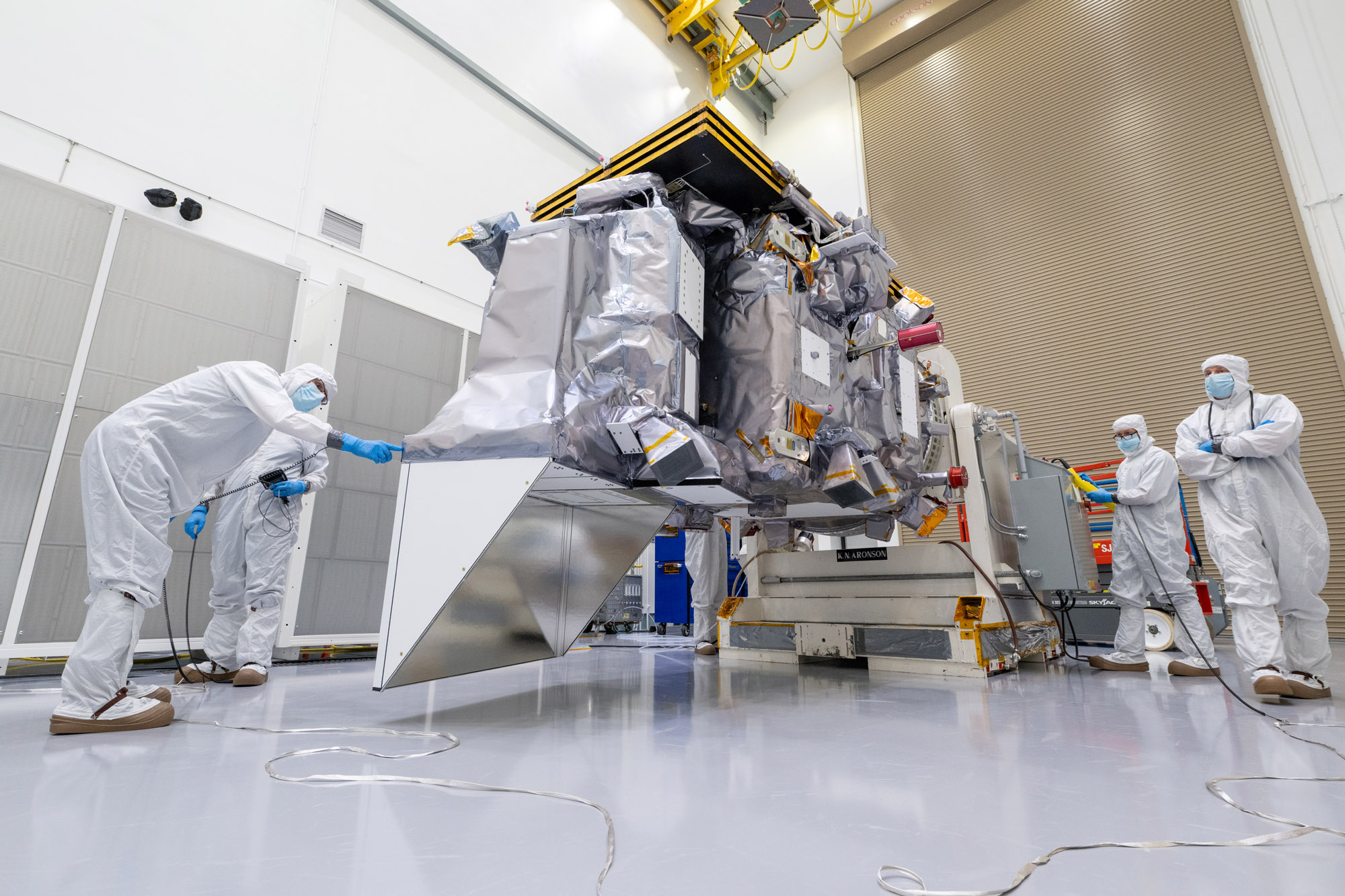
After a launch-heavy January which saw a personal-best-beating ten Falcon 9 missions, SpaceX is gearing up for its first flight of February and tomorrow’s 1:33 a.m. EST rise of NASA’s Plankton, Aerosol, Cloud, Ocean Ecosystem (PACE) spacecraft from storied Space Launch Complex (SLC)-40 at Cape Canaveral Space Force Station, Fla. The $805-million PACE will spend up to a decade performing critical measurements of Earth’s oceans and atmosphere, utilizing a first-of-its-kind optical spectrometer and a pair of multi-angle polarimeters to advance studies of the impacts of environmental change upon ocean health, fisheries and the planet’s carbon cycle.
PACE will be lofted by B1081, a Falcon 9 core which entered service last August to deliver Dragon Endurance and her Crew-7 quartet of NASA astronaut Jasmin Moghbeli, Denmark’s Andreas Mogensen of the European Space Agency (ESA), Japan’s Satoshi Furukawa and Russian cosmonaut Konstantin Borisov to the International Space Station (ISS), where they currently reside. Two further missions last November and December delivered SpaceX’s CRS-29 Cargo Dragon for a month-long research stay at the space station under the Commercial Resupply Service banner and a batch of Starlink low-orbiting internet communications satellites.
Having arrived on the Space Coast in November 2023, PACE underwent final tests and fueling ahead of encapsulation inside the Falcon 9 payload fairing last week and was transported out to SLC-40 last Thursday for integration. Two launch opportunities are available, both at 1:33 a.m. EST, on Tuesday and Wednesday, with deployment of PACE expected about 12 minutes and 22 seconds after liftoff.
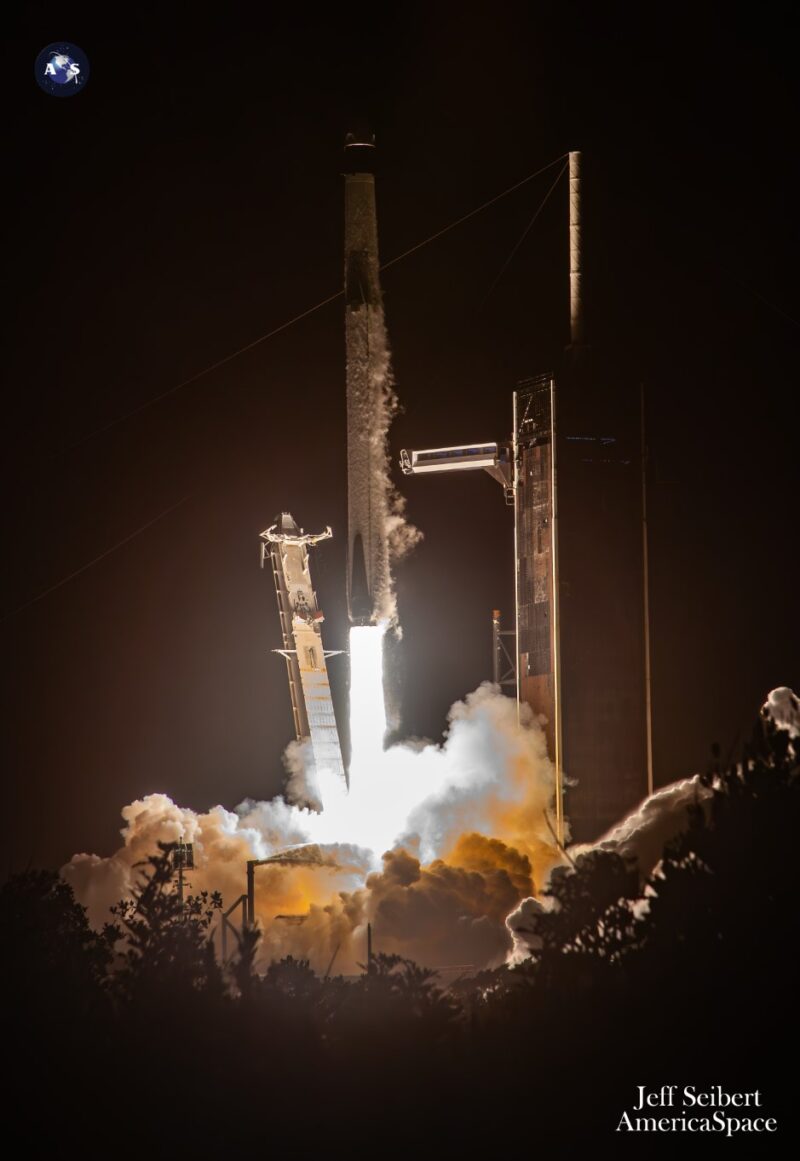
And for the third time in her career, B1081 will return to alight on solid ground at the Cape’s Landing Zone (LZ)-1. After deployment, PACE will enter an orbit some 420 miles (675 kilometers) above Earth, inclined 98 degrees to the equator.
Originally slated to fly two years ago under an earlier nomenclature of “Pre-Aerosol Clouds and Ocean Ecosystem”, the 3,750-pound (1,700-kilogram) PACE—managed by NASA’s Goddard Space Flight Center (GSFC) in Greenbelt, Md.—entered development in 2015. The mission will provide global views of microscopic algae concentrations, known as “phytoplankton”, which occupy the sunlit upper part of the oceans and produce at least half of Earth’s oxygen and forming the base of the marine food chain.

Quantifying phytoplankton levels, NASA noted at the time, carries important implications for expanding human knowledge of the carbon cycle and tracking climatic variability and change over time. “Knowing more about global phytoplankton community composition will help us understand how living marine resources respond to a changing climate,” said Project Scientist Jeremy Werdell of GSFC. “With PACE, we will learn more about the role of marine phytoplankton in the global carbon cycle.”
In June 2016, PACE transitioned out of its preliminary design phase at Key Decision Point-A (KDP-A) and the following September NASA opted to build the spacecraft “in-house”. This decision enabled instrument designs and capabilities to mature as the mission developed, as well as affording improved flexibility to meet budgetary and schedule challenges and in recognition of the fact that all the requisite engineering facilities and core competencies were readily available at GSFC.
Passing Key Decision Point-B (KDP-B) in August 2017, the “pace” of PACE accelerated as the design of the spacecraft and its primary instrument, the GSFC-furnished Ocean Color Instrument (OCI) got underway. Described as a first-of-its-kind optical spectrometer in terms of capability, OCI will take hyperspectral measurements of the oceans, covering a broader swath of the electromagnetic spectrum than any of its predecessor missions.
“We’re going to look at everything in the range from ultraviolet all the way out to shortwave infrared,” said PACE Project Manager André Dress of GSFC. “Other missions have only taken slices, and while that gives you good data, it doesn’t give you all of the information about different types of phytoplankton life in the ocean.”
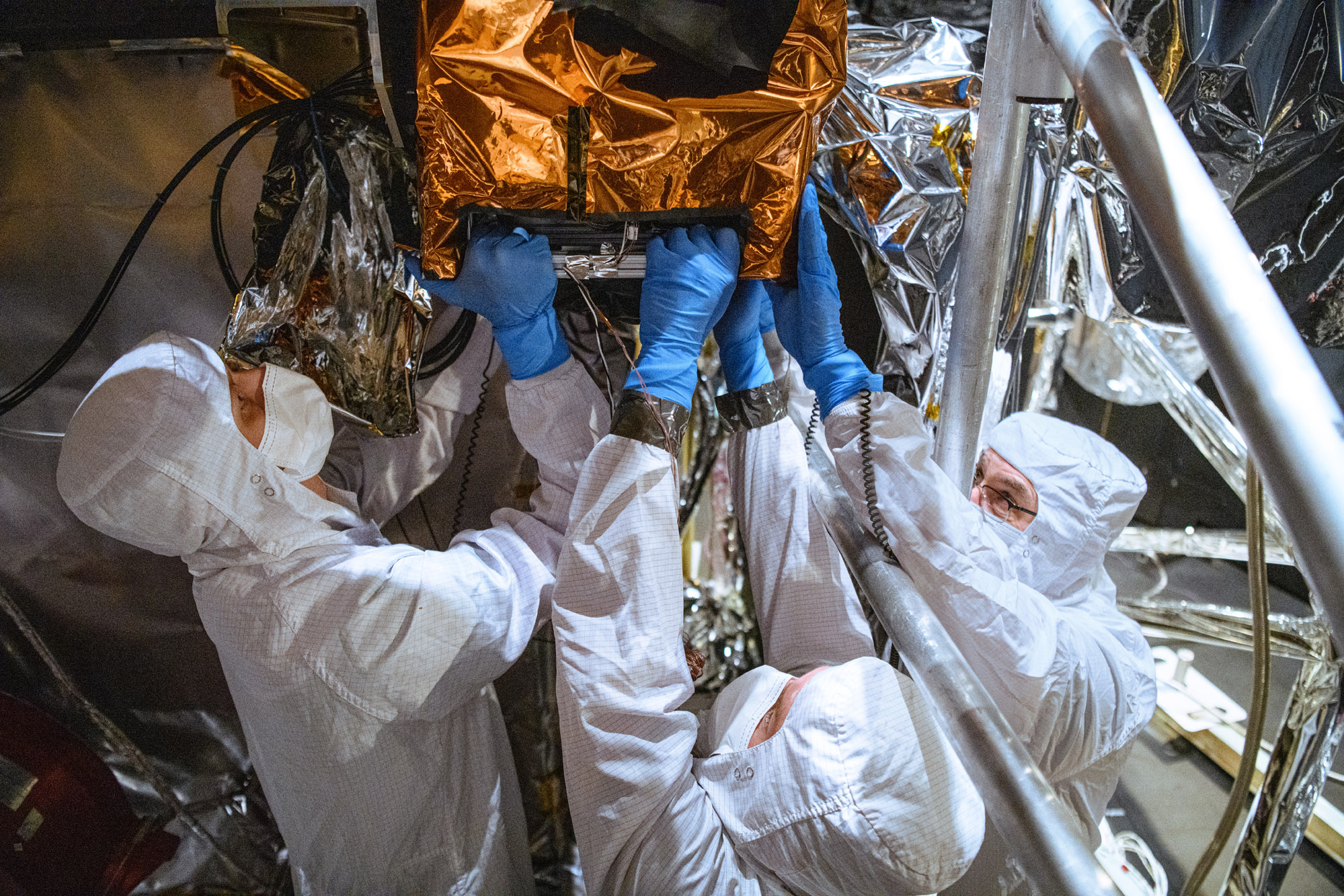
Also sharing payload space aboard PACE are a pair of multi-angle polarimeters: the Hyper-Angular Rainbow Polarimeter-2 (HARP-2)—a follow-on from HARP, an initial hyper-angular rainbow polarimeter deployed from the ISS as a CubeSat in February 2020—and the Spectropolarimeter for Planetary Exploration (SPEXone). Developed by the University of Maryland, Baltimore County (HARP-2) and the Netherlands Institute for Space Research and Airbus Defence and Space Netherlands (SPEXone), these instruments will accurately characterize aerosol properties and particulate sizes and compositions with unprecedented levels of accuracy and detail.
Together, the data output from OCI, HARP-2 and SPEXone will enable better quantification of phytoplankton and aerosol-particle effects upon marine biology, ocean chemistry and the home planet’s energy budget and ecological forecasting. PACE will permit scientists to better monitor fisheries, identify harmful algal “blooms” and observe changes over time in marine resources.
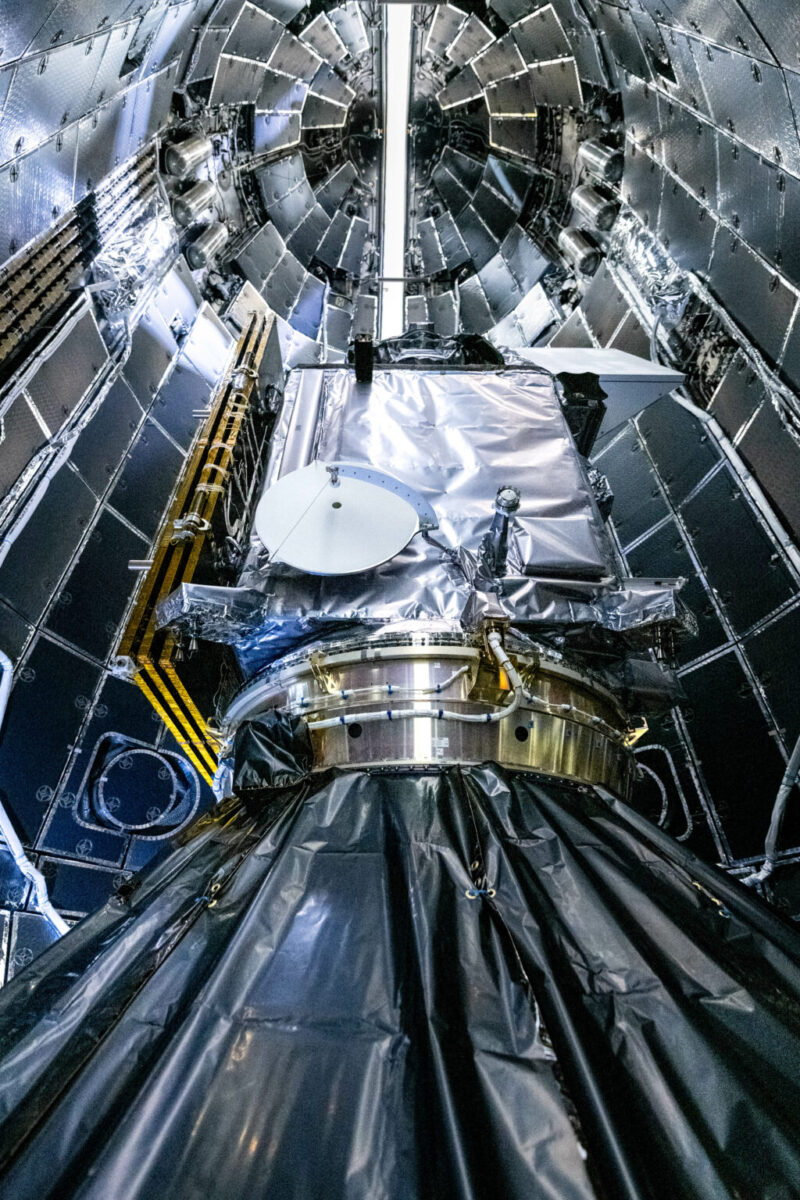
“The synergy across these three instruments will enable more advanced ocean-atmosphere science than is currently possible with anything existing or currently planned,” said Werdell. “The fact that PACE offers a combination of ocean and atmospheric science together represents a quantum leap forward in possibilities for better understanding our home planet and how it is changing.”
Contracts reportedly worth $80.4 million were signed between NASA and SpaceX in February 2020 to launch PACE aboard a Falcon 9 rocket. The launch date was originally baselined for December 2002, but has slipped to the right by more than a year.
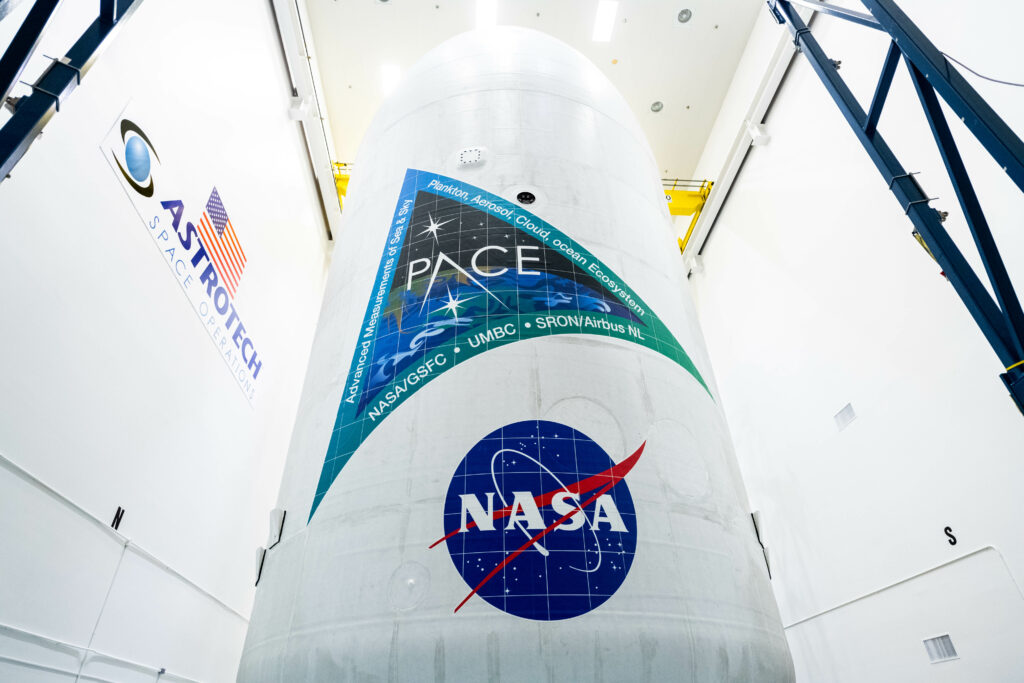
All three scientific instruments were integrated aboard PACE in the fall of 2022, allowing GSFC engineers to commence a rigorous, multi-month campaign of thermal, vacuum and environmental testing to put the combined spacecraft through a battery of trials to ensure it was ready for the violent ascent to space and between three and ten years in the harsh environment of Earth orbit. Last September, the major Thermal Vacuum Test (TVAC) was completed and on 14 November PACE was delivered from GSC to the Astrotech Space Operations facility in Florida.
Weather conditions for tomorrow morning’s launch are somewhat iffy, with only a 40-percent probability of being acceptable and improving only as high as 60-percent-favorable for the backup opportunity on Wednesday. “Lingering showers and storms from the weekend will continue across the area today and into the overnight hours with accompanying winds expected to increase,” NASA noted on Monday.





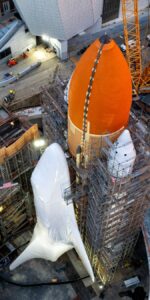
2 Comments
Leave a Reply2 Pings & Trackbacks
Pingback:SpaceX Launches Transporter-10, Aims for Next Launch Under Two Hours Later - SPACERFIT
Pingback:SpaceX Aims to Complete Weekend Triple-Header With Tonight’s Bandwagon-1 Launch - SPACERFIT